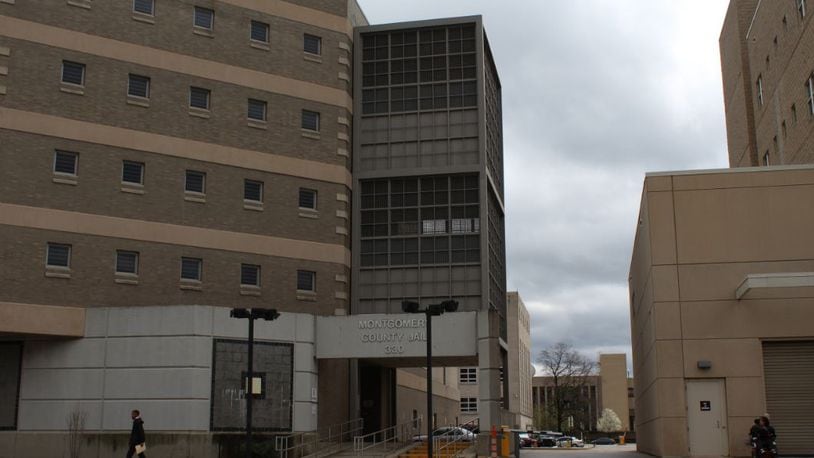“The bill does not include an appropriation, but the goal is to get the bill into law in time for the state’s upcoming capital bill,” said Rep. Jason Stephens, R-Kitts Hill.
The financing plan could heavily impact project proposals in the Miami Valley.
Montgomery County is already asking for $40 million from an Ohio Department of Rehabilitation and Correction competitive grant to pay for a major jail renovation. The project’s total price is estimated at $140 million.
The mail jail building was built in the mid-1960s, with pods added in 1993. The facility was renovated in 2004 and dormitories were added in 2008.
But while the most recent work added beds, they didn’t increase capacity for substance abuse, mental health and medical services, Sheriff Rob Streck has said.
Christine Ton, the sheriff’s office media director, declined to comment on HB 101 but said the office is monitoring its provisions and progress.
In April 2020, Greene County residents voted down a 0.25% sales tax levy to build a new 500-bed jail.
In November, county officials are trying again. Another 0.25% sales tax levy is on the fall ballot, seeking $52 million to build a 384-bed jail.
The current Greene County jail and Adult Detention Center have 382 beds altogether. The jail was built in 1969, and the Adult Detention Center in 2000. The proposed new jail would include the sheriff’s administrative offices, which are currently in a former Ford dealership dating to 1929.
Part of the existing jail’s foundation is crumbling, and the ward for mental health care is a hallway.
Greene County is under a 32-year federal consent decree prohibiting jail overcrowding, Sheriff Gene Fischer has said. County officials say a new jail is needed for better mental health and substance abuse treatment.
Under HB 101, the Ohio Facilities Construction Commission would work with the state Department of Rehabilitation and Correction to develop minimum standards for building jails. The Department of Taxation would create a ranking system for jail projects, and rank counties every other year based on local property and sales tax expectations.
The poorest counties would get preference, Stephens said.
Edwards said the jail in Meigs County – which only had a five-inmate capacity to start with – closed this year. That means officers are often out of the county finding somewhere to house their arrestees, cutting down on law enforcement time, he said.
While the southeast has major jail funding needs, counties statewide said the funding plan is needed, Edwards said.
“Counties receiving a minimum of 25% state funding through the jail construction funding process could save between $2.3 million and $6.9 million for the construction of a 100-bed facility,” the legislature’s bill analysis said.
The minimum proportion of funding that either a county or the state would have to put toward a jail project is 25% of the cost, Stephens said.
The state began funding jail projects in 1984 with $50 million. Subsequent appropriations varied. The last two General Assembly sessions put $4.5 million and $51.1 million toward jail projects, respectively.
“Recent jail construction projects in Ohio suggest a per-bed construction cost of between $90,000 and $275,000, or roughly between $9 million and $27.5 million for a 100-bed facility,” according to the bill analysis. “A county receiving a minimum of 25% state funding through the process could save between $2.3 million and $6.9 million for a 100-bed facility.”
In March, Hancock County Sherriff Michael Heldman testified for the bill on behalf of the Buckeye Sherriff’s Association. About a third of the state’s county jails were built before 1988, when incarceration rates were very different, he said in written testimony.
Hancock County got state help in building a 98-bed facility in the 1980s, still in use today, Heldman said. But standards have changed and so have inmate needs.
“In serving today’s jail population, jails must be more specialized when constructing a new or renovating an existing jail, so that we can better focus on housing and managing the needs of the mentally ill, those with substance use disorder, those who have been exposed to trauma and human trafficking and the increasing female population,” he said.
Renewed capital funding is essential to keep jails from falling into disrepair, becoming unsafe for prisoners and staff, Heldman said.
Stephens and Rep. Jay Edwards, R-Nelsonville, introduced House Bill 101 in February. The Infrastructure & Rural Development Committee held six hearings but the measure drew no real opposition. Reps. Sara Carruthers, R-Hamilton; Rodney Creech, R-West Alexandria; Brian Lampton, R-Beavercreek; Scott Lipps, R-Franklin; and Paul Zeltwanger, R-Mason, are among the cosponsors.
It passed the House 93-2 and is headed for Senate consideration.
About the Author
